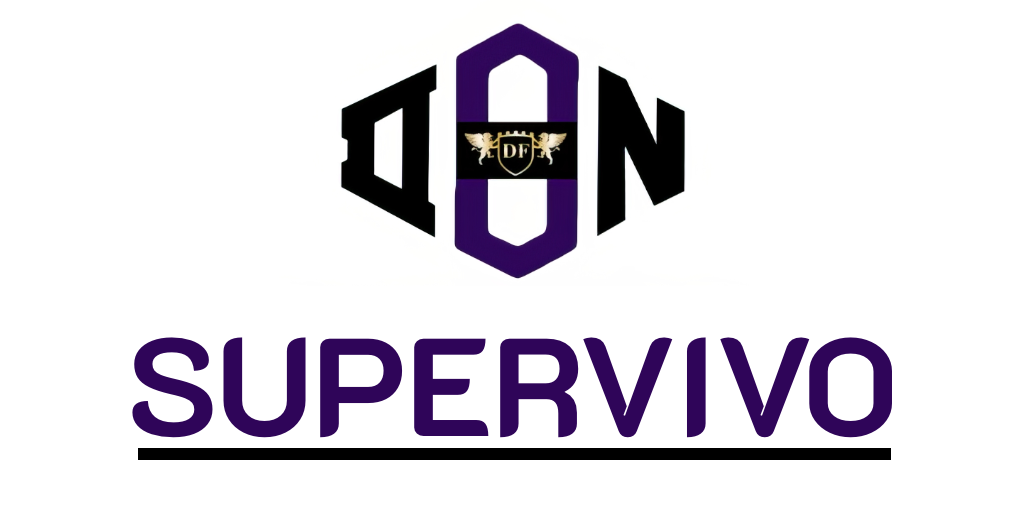As voice-controlled smart homes increasingly become a part of our everyday lives, they signify a transformative shift in future living. The synergy of advanced voice recognition technology and home automation places connectivity at the forefront, making connected homes an essential element of modernity. These innovations not only streamline daily tasks but also elevate our overall quality of life, creating a seamless blend of convenience, security, and energy efficiency.
Prominent brands such as Google Nest, Amazon Echo, and Apple HomeKit lead the charge in this revolution, shaping how we interact with our living spaces. As consumers become more accustomed to these smart solutions, we move closer to a future where homes are truly responsive to our needs.
The Rise of Voice-Controlled Smart Homes
The rise of smart homes has transformed the modern living experience, making it more intuitive and accessible than ever before. Voice-controlled technology plays a pivotal role in this evolution, providing users with unprecedented convenience and seamless integration of devices. As prices for smart devices have decreased, more households across the UK are embracing this new wave of connected living.

Recent statistics illustrate a significant expansion in the UK smart home market, fueled by a growing consumer demand for convenience and efficiency. Individuals are increasingly drawn to the idea of controlling their home environment through simple voice commands, making home management effortless. This movement has not only changed how people interact with their homes but has also sparked a new interest in home automation technologies.
“Education plays a crucial part in the adoption of voice-controlled technology. As consumers become more knowledgeable, their interest in connected living grows.”
Numerous tutorials and marketing campaigns have been instrumental in fostering this knowledge. They empower consumers to explore the possibilities of smart home systems and understand how they can benefit from voice-controlled technology, ultimately enhancing their daily lives. As a result, the rise of smart homes continues to gather momentum, charting a remarkable course into the future of living.
Understanding Automation Technology
Automation technology has transformed the way we interact with our living spaces. Within smart home solutions, this technology serves as the backbone, facilitating a seamless blend of comfort and efficiency. Key components such as sensors, smart hubs, and various connectivity standards empower users to create an environment tailored to their preferences.
At the core of technology integration lies the ability to control multiple devices through a single platform. This ensures that lighting, security systems, and heating, ventilation, and air conditioning (HVAC) systems can synchronise, enhancing energy efficiency and user convenience. By incorporating voice-controlled solutions, residents gain advanced functionalities that simplify daily tasks.
The evolution of automation technology is marked by significant trends. Machine learning, for example, enables devices to learn from user behaviours and preferences, creating a more intuitive experience. As technology advances, the possibilities for smart home solutions expand, making homes not just smarter but also more responsive to individual needs.
Voice-Controlled Smart Homes: The Future of Living
The concept of voice-controlled living is rapidly advancing, driving a transformative shift in residential environments. Innovative technology continues to enhance how individuals interact with their homes, fostering a more intuitive experience that learns from user behaviours and preferences.
In this smart home future, advancements in artificial intelligence pave the way for homes that can adapt and respond to the ever-evolving needs of their inhabitants. These systems promise a seamless integration of comfort and efficiency, as residents can manage various aspects of their homes through simple voice commands.
As homes become increasingly sophisticated, they hold the potential to significantly reduce energy consumption. Smart devices will enable users to monitor and control resource use effectively, promoting a more sustainable approach to living. This integration of voice-controlled environments aligns with the growing global commitment to environmental sustainability.
The journey towards a fully automated home is not merely about convenience; it represents a profound change in lifestyle choices and the relationship people have with their living spaces. With each innovation, a more connected and efficient way of life becomes attainable.
The Role of the Internet of Things
The Internet of Things (IoT) plays a transformative role in creating the foundation for voice-controlled smart homes. By enabling seamless communication among various connected devices, IoT fosters an interconnected home environment that enhances daily living experiences. Homeowners can now control numerous devices, such as lights, thermostats, and security systems, through a single platform, which simplifies the management of household functions.
Real-world applications exemplify how IoT significantly improves aspects such as security, energy management, and convenience. For instance, smart locks allow homeowners to monitor entries and exits remotely, while energy-efficient systems can optimise usage based on patterns, reducing costs and environmental impact. These examples underscore the importance of integrating IoT solutions in smart homes to enhance safety and streamline everyday tasks.
As the reliance on connected devices increases, so does the need for robust IoT security protocols. Ensuring safety and reliability in smart home solutions has become paramount, as cyber threats evolve. Homeowners must stay vigilant about the security of their interconnected devices, making informed choices when selecting IoT products that prioritise protection and user privacy.
The continuing evolution of IoT in smart homes opens up new possibilities for future advancements. As technology progresses, innovations will further enrich the functionality of connected devices, creating even more efficient and harmonious living spaces.
Smart Devices Revolutionising Home Automation
The home automation revolution is underway, driven by cutting-edge smart devices that transform the way we interact with our living spaces. Companies such as Philips Hue, Ring, and Samsung SmartThings have firmly established their foothold in this innovative technology landscape, offering solutions that enhance serenity, security, and energy efficiency in households.
Philips Hue, renowned for their smart lighting systems, allows users to set the mood with a simple voice command or through an intuitive mobile application. Homeowners can personalise their lighting to suit various activities or times of day, all while ensuring they are using energy efficiently.
Ring has revolutionised home security with its smart doorbells and cameras. These devices empower homeowners with real-time notifications and surveillance capabilities, fostering a sense of safety. Users can monitor their properties from anywhere, providing peace of mind in an ever-evolving security landscape.
Samsung SmartThings platforms facilitate seamless integration of multiple smart devices. The ability to create automated schedules further amplifies convenience for families. By connecting devices across different brands, users can manage their homes’ functions effortlessly.
Each of these brands plays a vital role in the home automation revolution, pushing boundaries and reimagining how we live. Embracing these smart devices not only enhances comfort but also demonstrates the immense potential of innovative technology in everyday life.
Voice Recognition Systems: The Heart of Smart Homes
Voice recognition systems form the essence of modern smart homes, enabling users to interact intuitively with their living environments. These systems harness the power of natural language processing, allowing for seamless communication between humans and machines. As technology advances, the capabilities of voice recognition systems continue to deepen, making the idea of a fully automated home increasingly attainable.
The mechanics behind these systems rely on sophisticated machine learning algorithms which interpret user commands with remarkable accuracy. This intricate process involves transforming spoken language into data that smart home cores can act upon. As a result, users find themselves engaged in a more personalised and responsive home experience.
Key players in this transformative sector, such as Amazon’s Alexa and Google Assistant, significantly contribute to developments within voice recognition technology. Their ability to integrate with various smart home devices allows individuals to control everything from lighting to temperature with simple vocal commands. This connectivity showcases the potential of voice recognition systems to greatly enhance the user experience whilst bringing convenience and efficiency to everyday tasks.
Moreover, the emphasis on accurate voice recognition has never been greater. As homes evolve to embrace more intelligent solutions, consumers expect these systems to respond promptly and accurately. Continuous advancements in both hardware and software will drive the growth of voice recognition technology, securing its pivotal role within smart home environments.
Benefits of Connected Homes
Connected homes offer a plethora of advantages that enhance the overall living experience. These benefits of smart homes are increasingly recognised by homeowners looking to elevate their lifestyles through innovative technology.
One major highlight is the improved energy efficiency. Smart devices help monitor and manage energy consumption, allowing families to reduce their utility bills and their carbon footprint. This not only contributes to substantial savings but also aligns with the broader initiative for sustainable living.
Another of the prominent connected homes advantages is enhanced security. Integrating smart security systems enables homeowners to monitor their properties in real-time. Features such as door sensors, motion detectors, and surveillance cameras work together to create a secure environment, providing peace of mind whether at home or away.
Convenience stands out as a vital trait of voice-controlled smart homes. With hands-free control, managing household tasks becomes effortless, allowing residents to focus on activities that genuinely matter. Simple voice commands can operate everything from lighting to climate control, promoting a seamless lifestyle.
The improved living quality extends beyond immediate comforts. Investing in smart technology can significantly boost a home’s resale value. Many prospective buyers favour residences equipped with modern gadgets, making connected homes more appealing in the competitive real estate market.
Ultimately, these elements contribute to a lifestyle that is not only functional but enriching. Embracing the advantages of connected homes transforms daily routines, creating a sanctuary that meets the varied needs of today’s families.
Challenges and Considerations in Smart Home Implementation
As the demand for voice-controlled smart homes continues to rise, it becomes essential to address the smart home challenges that come with this burgeoning technology. One of the primary concerns is security and privacy. With smart devices constantly connected to the internet, vulnerabilities can be exploited by malicious entities, putting personal data and even physical safety at risk. Consumers must prioritise selecting devices from trusted manufacturers known for their robust security protocols.
Another significant factor involves interoperability issues. As numerous brands introduce their unique ecosystems, ensuring that devices communicate seamlessly can be a daunting task. Consumers should carefully consider their current and future smart home setups, making informed choices that allow for compatibility across different devices. Researching available technologies can mitigate potential issues and enhance the overall user experience.
Finally, understanding the implementation considerations is crucial for creating a truly connected home. Educating oneself on the functionalities and limitations of each device will lead to better decisions and satisfaction. As manufacturers continue to innovate and roll out improvements in security features, user education will play a vital role in the successful integration of smart home technologies. This ongoing evolution promises an exciting future for voice-controlled smart homes, where enhanced security practices will be paramount.









